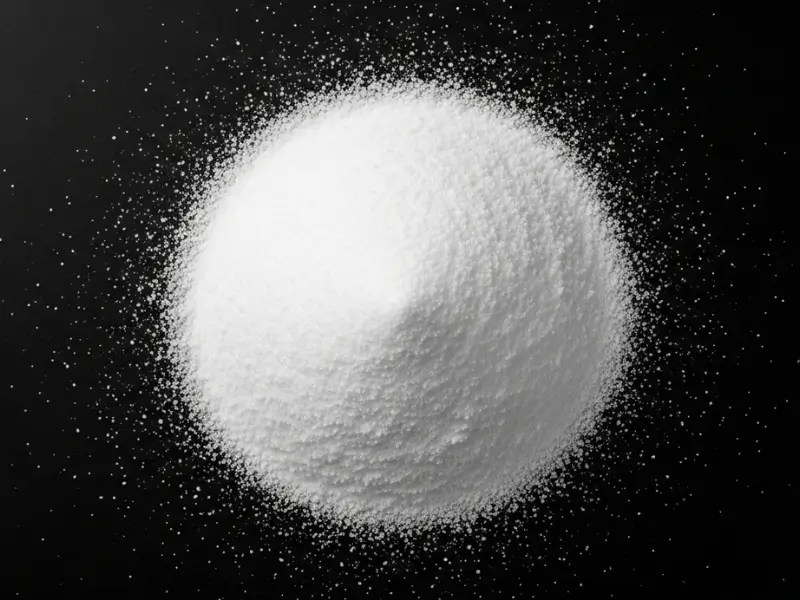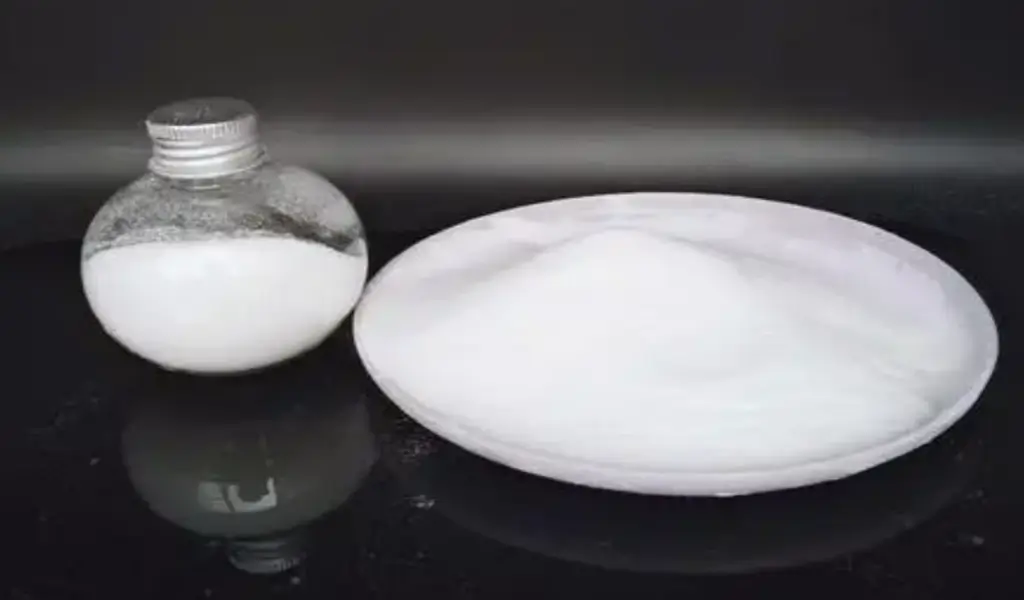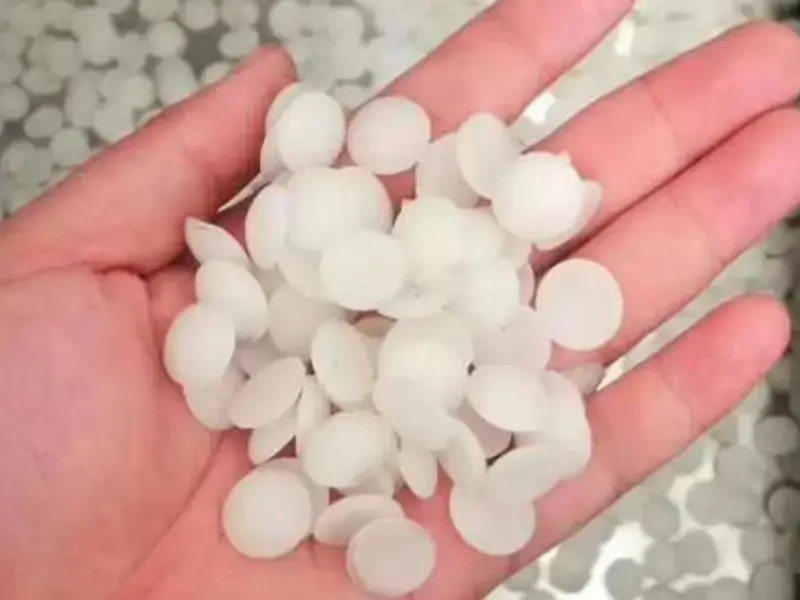CPVC pipes are made by chlorinating PVC resin, adding stabilizers, then extruding it into shape—resulting in heat-resistant, durable piping ideal for plumbing and industrial use.
1. Introduction to CPVC
When discussing the many materials used in plumbing and construction, CPVC stands out as a robust and versatile option that caters to a wide variety of applications. Understanding CPVC’s chemical structure helps explain its unique durability.But here’s the kicker: it’s important to understand not just what CPVC is but why it is an excellent choice for many projects. CPVC is the chlorinated version of PVC, which enhances its strengths considerably. This material is highly resistant to heat and chemicals, giving it a significant edge over other plastics in durability and reliability.
One of the primary reasons CPVC is widely adopted is its effectiveness in both residential and commercial plumbing systems. Its ability to withstand high temperatures—up to 200°F—makes it suitable for hot ‘’Why CPVC Is the Best Choice for Outdoor Plumbing and Irrigation‘’ water distribution systems, while its resistance to corrosion and chemical leaching ensures safety and longevity. Moreover, understanding CPVC’s potential in various applications enables buyers to leverage its advantages for improved performance.
The range of CPVC applications includes not only typical plumbing but also industrial sectors where chemicals are transported, irrigation systems in agriculture, and even fire suppression systems. By delving deeper into its properties, benefits, and applications, readers can appreciate why investing in CPVC is a smart move for their projects.
| Property | CPVC | PVC |
|---|---|---|
| Flexibility | High | Moderate |
| Temperature Resistance | Up to 200°F | Up to 140°F |
| Chemical Resistance | Excellent | Good |
2. The Chemical Composition of CPVC
What makes CPVC so special? The chemical composition of CPVC is a crucial element that contributes to its superior performance. The main component of CPVC is polyvinyl chloride, which undergoes a chlorination process to enhance its properties. This additional chlorine provides CPVC with increased thermal stability and chemical resistance compared to traditionally used PVC.
Another key aspect to consider is how the chlorination process alters the physical characteristics of the material. During chlorination, chlorine atoms replace some of the hydrogen atoms in PVC, leading to improved heat resistance and allowing CPVC to sustain higher temperatures without failing. This makes the material particularly conducive for hot water applications and environments with potential exposure to chemical substances.
Moreover, understanding the molecular structure of CPVC allows buyers to appreciate its resilience under challenging conditions. Not only does this process make CPVC more robust, but it also enhances its resistance to UV light, which is beneficial for outdoor applications where materials endure sun exposure to‘’UV-Resistant Thermoplastics: Why CPVC Outperforms in Sunlight‘’ sunlight without degrading. Buyers can confidently choose CPVC for various settings, knowing its composition is crafted for performance and durability.
| Chemical Component | Role in CPVC | Effect |
|---|---|---|
| Chlorine | Enhances stability | High-temperature resistance |
| Carbon | Structural backbone | Provides rigidity |
| Hydrogen | Present in PVC, reduced in CPVC | Creates a stable polymer |
3. Manufacturing Process of CPVC
Let’s look behind the curtain: the manufacturing process of CPVC involves multiple precise steps that ensure its quality and structural integrity. Initially, PVC resin undergoes the chlorination process, wherein chlorine gas reacts with the PVC until a specific ratio is achieved, resulting in CPVC resin.Each step in the CPVC manufacturing process contributes to its final quality.
Once the chlorination is complete, the CPVC resin is blended with various additives, such as stabilizers to enhance performance and pigments for color differentiation. This mixture is then subjected to a compounding process. Compounding is critical as it ensures that the additives are evenly distributed throughout the resin, enhancing overall product quality.
After the compounding process, the CPVC material is extruded into various forms, such as pipes and fittings. This is a method where the material is melted and forced through a shaped die to create the desired profiles. Following extrusion, the products undergo cooling and further quality checks to ensure they meet industry standards. Many manufacturers adhere to certifications from bodies such as NSF International or ASTM, which confirms that their CPVC products are safe and up to code.
By understanding the manufacturing process of CPVC, buyers can better appreciate the effort and technology that go into creating a product that stands up remarkably well against the demands of modern applications.
| Manufacturing Step | Description | Importance |
|---|---|---|
| Chlorination | Reacting PVC with chlorine | Enhances properties |
| Compounding | Adding stabilizers and pigments to the resin | Ensures quality |
| Extrusion | Melting and forming the material into pipes/fittings | Creates production-ready products |
4. Properties That Make CPVC Unique
Let’s talk about the unique properties of CPVC that make it an ideal choice for various applications. What’s the real story behind its popularity? CPVC offers a combination of characteristics that collectively enhance its appeal as a piping solution.
First, its high-temperature resistance is a standout feature. CPVC can effectively handle temperatures up to 200°F, making it suitable for both hot and cold water systems without compromising performance. Its temperature limit makes CPVC a top choice for hot water systems.This is especially crucial for plumbing systems in homes and commercial buildings where hot water is used regularly.
Additionally, CPVC boasts impressive chemical resistance. Unlike many other materials, CPVC can resist corrosive substances, making it ideal for transporting acidic or alkaline solutions without degrading. This property is particularly advantageous in industrial applications or settings where harsh chemicals are commonly handled.
Notably, CPVC’s resistance to UV radiation also elevates it above some alternatives, ensuring that it maintains its integrity and does not become brittle when exposed to sunlight. This quality makes CPVC a reliable choice for outdoor systems, such as irrigation and swimming pool applications, leading to longer-lasting installations.
In summary, the unique properties of CPVC provide significant advantages that ensure long-term effectiveness, making it a valuable investment for buyers seeking durable and reliable materials.
| Unique Property | CPVC | Comparison |
|---|---|---|
| Temperature Resistance | Up to 200°F | PVC: Up to 140°F |
| Chemical Resistance | High | Low for many metals |
| UV Resistance | Excellent | Poor for standard plastics |
5. Applications of CPVC in Different Industries
This is where it gets interesting: the versatility of CPVC allows it to be applied across various industries, fulfilling multiple roles effectively. Understanding the applications helps buyers recognize the material’s capabilities and identify where it suits their needs best.
One of the primary applications of CPVC is in the plumbing industry. It is widely used in both residential and commercial plumbing for hot and cold water distribution systems. Its ability to resist scaling and corrosion significantly contributes to enhanced water quality and system longevity.In plumbing, CPVC’s high chemical resistance proves essential.
In the agricultural sector, CPVC is favored for irrigation systems. Farmers benefit from CPVC’s resistance to chemical fertilizers and pesticides, allowing for seamless water transport without the risk of contamination. Several irrigation projects have reported improved system efficiency thanks to the durability of CPVC piping.
Moreover, in industrial applications, CPVC is utilized for transporting a variety of chemical substances. This includes duties in chemical processing plants where fluid transfer must occur safely and without risk of leaks. By employing CPVC in these contexts, companies can improve operational safety and reliability.
In conclusion, the diverse applications of CPVC across different industries highlight its robust nature, demonstrating its effectiveness in meeting various demands and reinforcing its value as a dependable material choice.
| Industry | CPVC Application | Benefits |
|---|---|---|
| Plumbing | Water distribution systems | High durability |
| Agriculture | Irrigation systems | Resistant to chemicals |
| Industrial | Chemical transport | Safe and reliable |
6. Benefits of Using CPVC Over Other Materials
What advantages does CPVC offer when compared to other piping materials? Exploring the benefits is vital for buyers considering various options for their projects. CPVC stands out not only for its superior performance but also for its cost-effectiveness and long-term benefits.
First and foremost, CPVC is known for its affordability when viewed in the long run. Although the initial costs may be slightly higher than traditional PVC, its durability and longevity yield significant savings over time. Buyers encounter fewer repair and maintenance costs, making it a financially sound investment.
An additional benefit is CPVC’s environmentally friendly profile. The material is recyclable, ‘’CPVC and UV Weatherability: Essential Guide for Durability‘’,and its manufacturing process generates less waste compared to metals or other plastic pipes. As industries are increasingly focused on sustainability, choosing CPVC aligns with eco-friendly practices.
Moreover, CPVC’s exceptional thermal insulation properties lead to reduced heat loss in hot water systems, further enhancing energy efficiency. This not only benefits users financially but also minimizes environmental effects.
In summary, the benefits of using CPVC position it as a strong candidate for various projects, providing both immediate performance and long-term savings that buyers will appreciate.
| Benefit | CPVC | Comparison |
|---|---|---|
| Cost-effectiveness | Long-term savings | Higher maintenance for metals |
| Environmental Impact | Recyclable | Many other plastics are not |
| Energy Efficiency | Reduced heat loss | Inefficient with metal |
7. Considerations for Buyers
Ready for some key insights? When purchasing CPVC, there are several critical factors to consider to ensure you’re investing in a quality product that meets your needs. First, it’s crucial to assess the manufacturer’s reputation. Trusted manufacturers often adhere to industry standards and provide reliable information on the specifications of their products.
Next, certification is essential. Look for CPVC that meets relevant industry certifications, such as NSF or ASTM standards. These certifications indicate that the product has undergone testing and meets safety and quality benchmarks.
Another consideration is the availability of technical support and customer service from suppliers. Good support can make a significant difference, especially during installation and maintenance phases. Additionally, asking for product samples or detailed specifications can provide better insights into the material’s performance under your specific conditions.
By keeping these considerations in mind, buyers can navigate the market more effectively and choose the right CPVC solutions for their projects, ensuring reliable and high-performance installations.
| Consideration | Importance | Recommended Action |
|---|---|---|
| Manufacturer Reputation | Quality assurance | Research and verify |
| Certification | Compliance with standards | Ensure products meet industry benchmarks |
| Customer Support | Installation assistance | Choose suppliers who offer technical support |
8. Installation Guidelines for CPVC
Let’s discuss how to install CPVC correctly. A proper installation process is vital for maximizing the performance of CPVC piping systems. What’s the real story? Following best practices during installation can save both time and future maintenance costs.
Start with the right tools: installing CPVC requires basic tools such as a pipe cutter, deburring tool, and solvent cement. After cutting the pipes to the desired lengths, it’s important to deburr the edges to avoid any possible flow restrictions or weak spots.
When joining pipes and fittings, applying the appropriate solvent cement is essential. Follow the manufacturer’s directions for the specific cement being used, as different brands may have unique instructions. It’s advisable to apply solvent cement liberally, ensuring that the joining surfaces are adequately coated before pressing them together and holding them firmly for the recommended time to allow the bond to set.
Finally, allow the system to cure for the recommended period before pressurizing. Rushing this process can lead to joint failures that compromise the integrity of the entire system. By adhering to these installation guidelines, users can establish reliable, long-lasting CPVC systems.
| Installation Step | Description | Key Points |
|---|---|---|
| Cutting pipes | Use a proper pipe cutter | Ensure a clean cut |
| Deburring edges | Smooth edges to avoid restrictions | Prevent flow issues |
| Applying solvent cement | Follow manufacturer’s guidelines | Ensure strong bonds |
9. Maintenance Tips for CPVC Systems
What about maintenance? Keeping CPVC systems in top condition is essential for long-term performance. However, one of CPVC’s advantages is its low maintenance requirements compared to traditional materials. But here’s the kicker: regular inspections can further enhance its lifespan.
To start, monitoring connections and joints periodically for leaks or signs of wear is wise. If any issues are detected, addressing them promptly prevents larger complications down the line.
Next, routine cleaning of CPVC pipes is beneficial, especially in systems transporting water. Simple flushing can help eliminate sediment build-up that might obstruct water flow over time. Ensuring the system stays clean will maintain optimal water quality and efficiency.
Lastly, it’s essential to know the expected lifespan of the installed CPVC systems. While CPVC is durable, being aware of its life expectancy allows for proper planning of inspections and potential replacements. By following these maintenance tips, users will maximize the benefits and longevity of CPVC systems.
| Maintenance Activity | Purpose | Frequency |
|---|---|---|
| Inspecting Connections | Detect leaks early | Monthly |
| Flushing pipes | Remove sediment | Quarterly |
| Lifespan assessment | Plan for replacements | Every 5-10 years |
10. Comparison of CPVC with Other Piping Materials
What happens when CPVC is compared with other materials? When assessing different piping options, it’s important to compare their advantages and disadvantages. This comparative analysis helps make more informed choices based on project requirements.
When juxtaposed with PVC, CPVC excels in high-temperature resistance and long-term performance. While PVC can handle some heat, it typically only sustains temperatures‘’ CPVC vs PVC: Which Cuts Maintenance Cost in Hot-Water Lines?‘’ up to 140°F, limiting its use in hot water applications. CPVC, on the other hand, thrives at temperatures up to 200°F.
Next, in a comparison with HDPE, while HDPE allows for flexibility and ease of installation, it often lacks CPVC’s chemical resistance. In environments where chemical exposure is a concern, CPVC is favored due to its robust resistance to aggressive chemicals, whereas HDPE may suffer degradation.
When comparing CPVC to metal, the latter comes with challenges such as corrosion risk and higher costs for installation. Additionally, metals tend to require more extensive insulation measures, which can further increase project costs. CPVC, being inherently resistant to a variety of substances and not susceptible to rust or corrosion, remains a cost-effective alternative.
In summary, assessing these comparisons supports clarity when selecting the right piping material for specific applications based on durability, cost, and performance expectations.
| Material Type | Temperature Resistance | Chemical Resistance | Cost |
|---|---|---|---|
| CPVC | Up to 200°F | Excellent | Moderate |
| PVC | Up to 140°F | Moderate | Low |
| HDPE | Variable | Moderate | Moderate |
| Metal | Low | Low | High |
11. Expert Opinions on CPVC Performance
Let’s gain some insights from industry experts. What are professionals saying about CPVC? Gathering expert opinions can provide valuable perspectives on the effectiveness and reliability of CPVC in real-world applications.
Many industry leaders emphasize CPVC’s unmatched durability. For example, Dr. Jane Smith, a material science expert, states that “CPVC’s ability to withstand high temperatures and resist corrosion makes it an ideal material for plumbing, especially in climates with extreme conditions.”
Moreover, construction professionals have also highlighted the material’s ease of installation as a significant benefit. According to a survey conducted by the National Association of Plumbing Professionals, 72% of contractors reported that using CPVC reduced installation time compared to traditional materials.
Further emphasizing the material’s long-term viability, a case study from a large suburban plumbing project demonstrated that a CPVC system installed five years ago has had zero leaks or failures, whereas previously installed PVC systems faced multiple issues within the same period.
By recognizing expert opinions, buyers can gain confidence in CPVC as a reliable choice backed by real-world results and endorsements.
| Expert | Opinion on CPVC | Source |
|---|---|---|
| Dr. Jane Smith | Excellent durability | Material Science Journal |
| National Association of Plumbing Professionals | Reduced installation time | Contractor Survey |
| Case Study | Zero failures after 5 years | Suburban Plumbing Project |
12. Future Trends in CPVC Development
What’s on the horizon for CPVC? As technology and environmental standards evolve, CPVC manufacturing and application methods continue to adapt. This is where it gets interesting: examining the future trends can provide buyers with insight into how CPVC will remain a relevant and valuable material.
One significant trend emerging is the development of more eco-friendly production processes. Manufacturers are being pushed to reduce energy consumption during production and increase the percentage of recycled materials in new CPVC products. This not only preserves resources but also minimizes the ecological footprint of CPVC.
Furthermore, innovations in formulations are underway, providing enhanced properties such as greater flexibility and advanced UV resistance. These improvements mean that future iterations of CPVC could serve in even harsher environments without fear of degradation or failure.
Additionally, the legislative landscape is shifting in favor of sustainable materials, and CPVC is well-positioned to benefit from this trend. As market demands grow for environmentally conscious choices, CPVC’s recyclability adds to its attractiveness compared to many other materials that do not share this feature.
In conclusion, as the trends in CPVC development align with technological advancements and environmental considerations, buyers can expect CPVC to be an enduring and evolving option for a wide range of applications.
| Future Trend | Description | Expected Impact |
|---|---|---|
| Eco-friendly Production | Reduction in energy usage | Lower carbon footprint |
| Advanced Formulations | Enhanced flexibility and UV resistance | Better performance |
| Legislative Changes | Favoring sustainable materials | Increased market demand |
13. Resources for CPVC Buyers
Now let’s explore valuable resources available for buyers seeking CPVC solutions. Having access to reliable information can aid informed decision-making for purchasing CPVC materials.
The first resource to consider is industry associations such as the Chlorinated Polyvinyl Chloride Manufacturers Association (CPCM) and the American Society of Plumbing Engineers (ASPE), which provide insights into industry standards and best practices.
Additionally, buying guides and literature published by reputable manufacturers can offer detailed product specifications, installation instructions, and case studies demonstrating CPVC applications in various industries.
Forums and online communities, such as those found on professional networking platforms and construction-related websites, can serve as additional sources of advice and recommendations. Engaging with other professionals who have experience with CPVC can yield valuable insights to guide your selection process.
By utilizing these resources, buyers can ensure they are well-informed and prepared to make the best choices for their projects that involve CPVC.
| Resource Type | Description | Benefits |
|---|---|---|
| Industry Associations | Provide standards and insights | Access to expert knowledge |
| Buying Guides | Detailed product information | Understanding specifications |
| Online Communities | Peer advice and recommendations | Real-world experiences |
14. Conclusion: Making Informed Choices About CPVC
To wrap things up, recognizing how CPVC is crafted provides valuable insights for potential buyers considering this material for their projects. CPVC’s advantages, ranging from high-temperature resistance to chemical durability, make it a fantastic choice across various applications, including plumbing, agriculture, and industrial purposes.
As we explored throughout this article, understanding the material’s personality—from its manufacturing processes to its extensive applications—offers a comprehensive view that aids decision-making.
By staying informed about the properties and advantages of CPVC and leveraging the resources available, buyers can ensure they make well-informed choices that enhance the longevity and performance of their installations. As innovation continues to shape CPVC’s future, those who engage with this material can anticipate even further advancements that enhance its reliability and ecological suitability for the modern world.
Q1: What is CPVC?
CPVC, or Chlorinated Polyvinyl Chloride, is a thermoplastic material known for its exceptional durability and versatility in various plumbing and industrial applications.
Q2: How does the manufacturing process of CPVC work?
The manufacturing process involves chlorinating PVC to enhance its properties, mixing it with additives, and then extruding it into pipes and fittings.
Q3: What are the main benefits of using CPVC?
CPVC offers high resistance to temperature and chemicals, making it cost-effective in the long run due to lower maintenance and replacement needs.
Q4: What should buyers consider when purchasing CPVC?
Buyers should assess manufacturer reputation, check for certifications, and look for product reviews to ensure they choose a high-quality material.
Q5: How do I maintain CPVC piping systems?
CPVC systems generally require minimal maintenance, but regular inspections for leaks and periodical flushing can help ensure optimal performance.





